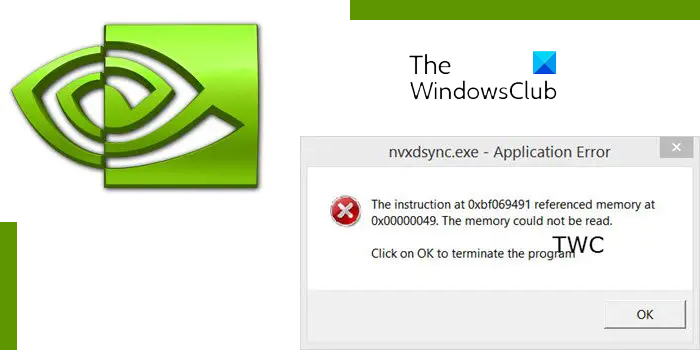You may have seen a nvxdsync.exe process in your Task Manager and wondered what it is. Well, nvxdsync.exe is an executable file, which is part of the NVIDIA User Experience Driver Component. Its basic function is to manage and help render 3D Graphics.

What is nvxdsync?
The file nvxdsync.exe can be found in C:\Program Files\NVIDIA Corporation\Display folder. If it is located in this folder, then it is the legitimate NVIDIA process. If not, then it could be malware.
It has a size of 1169 KB on my Windows and consumes 3.8 MB of memory. The program, at times, is known to use massive amounts of memory. If you face this issue, terminating this process won’t crash your system, but it is required to function the Graphics/3D card properly. You may face difficulties while playing 3D games or using 3D processes.
Nvvsvc.exe is NVIDIA Display Driver Service. This process provides desktop-level support to the NVIDIA Display Driver. To disable this service, you must run services.msc to open the Services Manager, double-click on NVIDIA Display Driver Service, and set its start-up status to Disable. Disabling the NVIDIA Display Driver Service will stop both, viz. nvxdsync.exe and related process nvvsvc.exe from running, and also prevents the NVIDIA Control Panel from showing up on the desktop context menu.
Fix nvxdsync.exe Application Error
Nvxdsync.exe application errors may occur if Windows encounters lag while rendering the frames during the execution of 3D files. Try to free up your computer resources, like changing the Windows theme to Basic.
Many sites suggest using a Registry Cleaner to fix it. No! Using it will not help you fix nvxdsync Application Error.
I received this error. Clicking on OK / Terminating the process / A simple restart of the computer will help make it go away.
If you continue receiving such nvxdsync.exe errors, you might consider reinstalling this NVIDIA driver.
I hope this throws some light on the process.
Looking to learn more about other processes, files, file types or file formats in Windows? Check these links:
Windows.edb files | Thumbs.db files | DLL and OCX files | NFO and DIZ files | Swapfile.sys, Hiberfil.sys & Pagefile.sys | TrustedInstaller.exe | Index.dat file | Desktop.ini file | Svchost.exe | RuntimeBroker.exe | StorDiag.exe | Shellexperiencehost.exe.